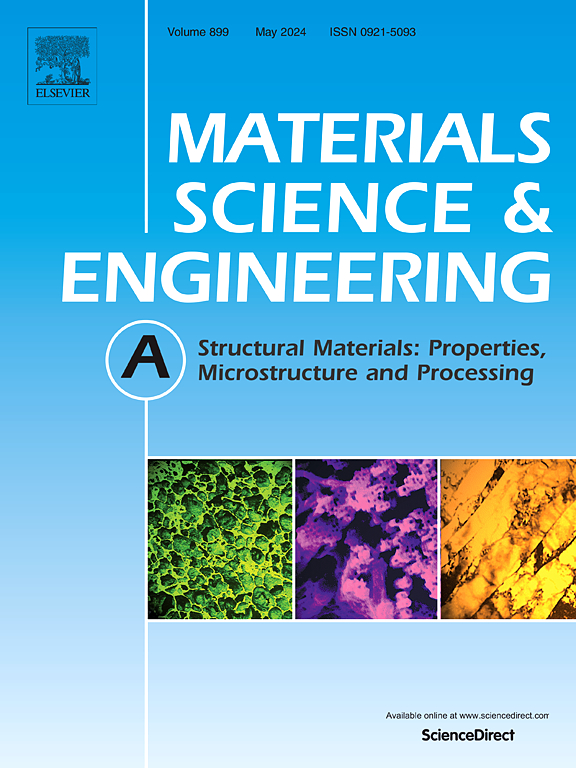Effect of bainite microstructure control on the deformation behavior of ferrite/bainite dual-phase steel
IF 7
2区 材料科学
Q1 MATERIALS SCIENCE, MULTIDISCIPLINARY
引用次数: 0
Abstract
Affected by the modes of bainite transformation, its microstructure, mechanical properties and its coordinated deformability with ferrite are changed. So that the deformation behavior and the mechanism of ferrite/bainite dual-phase steels are different at different deformation stages. In this study, SEM, EBSD and EMPA are used to investigate the effect of different intragranular and grain boundary bainite microstructures on the deformation behavior of ferrite/bainite dual-phase steels. The results show that: bainite transformation mode determines the morphology of carbide in the bainite, which in turn affects the bainite hardness. The bainite with high hardness can hinder the expansion and merging of microcracks, delay the occurrence of plastic instability in experimental steels, and improve the deformation property of the experimental steel at the later stage of tensile deformation. The bainite with low hardness has good coordination of deformation with the ferrite matrix, and the low-angle grain boundaries are conducive to the diffusion of stress to ferrite, which improves the deformation property of the experimental steel at the initial stage of tensile deformation. The bainite microstructure obtained through microstructure control has the advantages of the above two types of bainite and shows good deformation properties throughout the deformation process.
贝氏体组织控制对铁素体/贝氏体双相钢变形行为的影响
受贝氏体相变方式的影响,合金的显微组织、力学性能以及与铁素体的协同变形能力都发生了变化。因此,铁素体/贝氏体双相钢在不同变形阶段的变形行为和变形机理是不同的。利用SEM、EBSD和EMPA研究了不同晶内和晶界贝氏体组织对铁素体/贝氏体双相钢变形行为的影响。结果表明:贝氏体相变方式决定了贝氏体中碳化物的形态,进而影响贝氏体的硬度。高硬度贝氏体可以阻碍微裂纹的扩展和合并,延缓试验钢塑性失稳的发生,改善试验钢拉伸变形后期的变形性能。低硬度贝氏体与铁素体基体具有良好的变形配位性,低角度晶界有利于应力向铁素体扩散,提高了试验钢在拉伸变形初期的变形性能。通过组织控制获得的贝氏体组织具有上述两种贝氏体的优点,并在整个变形过程中表现出良好的变形性能。
本文章由计算机程序翻译,如有差异,请以英文原文为准。
求助全文
约1分钟内获得全文
求助全文
来源期刊

Materials Science and Engineering: A
工程技术-材料科学:综合
CiteScore
11.50
自引率
15.60%
发文量
1811
审稿时长
31 days
期刊介绍:
Materials Science and Engineering A provides an international medium for the publication of theoretical and experimental studies related to the load-bearing capacity of materials as influenced by their basic properties, processing history, microstructure and operating environment. Appropriate submissions to Materials Science and Engineering A should include scientific and/or engineering factors which affect the microstructure - strength relationships of materials and report the changes to mechanical behavior.
 求助内容:
求助内容: 应助结果提醒方式:
应助结果提醒方式:


